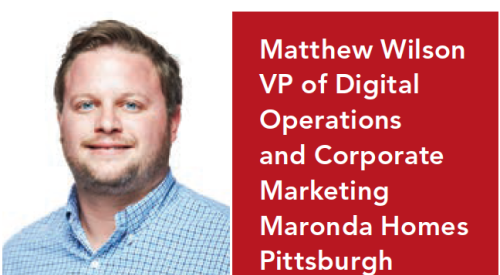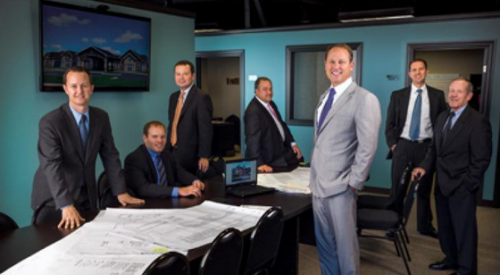| Kates says builders should use the Internet to build prospect databases and their Web sites and e-mail to stay in contact with those prospects. |
For 35 years, Stan Kates, 61, has led one of the largest North American advertising agencies specializing in real estate marketing. He operates across Canada and in U.S. markets from Las Vegas to Florida. Always an innovator, Kates can convince even the most conservative builders to try new methods of marketing homes, probably because his innovations focus on selling faster at lower costs.
In 1972, for example, he led a marketing campaign for a consortium of five publicly held Canadian builders on an entry-level, zero-lot-line community in suburban Toronto called Villages of Central Park. In a downtown Toronto sales office, 13 miles from the site, Kates’ team pre-sold 2,600 homes in six months. No model homes were ever built.
Instead, Kates used an eight-minute film to set the stage for a carefully crafted sales process designed to heighten the urgency to buy to fever pitch. The film informed prospects that the small lots, on land leased from the province of Ontario (with the option to buy later), would lower their down payments, creating a unique opportunity for cash-strapped young couples to get into detached homeownership in a city where, at the time, land costs were skyrocketing.
Sales agents met with prospects in a row of small, glass-walled closing rooms, in full view of other prospects waiting for their appointments. As contracts were signed, the sales manager would ominously announce over the public address system, "Attention, sales agents, lot 361 is now sold. I repeat, lot 361 is now off the board!" From the back of the room, prospects could be seen squirming in their seats as lot markers on a huge site plan changed from green to red.
In the mid-1980s, Kates began perfecting techniques he now calls Priority Preview Marketing. He would run full-page ads touting a new development in local newspapers, complete with renderings, floor plans and illustrations of amenities. The ads contained a large coupon for readers to fill out and return. It promised shoppers price breaks and other incentives by placing their names on the "preferred preview list," meaning they would get a chance to buy before sales were opened to the general public. Of course, the coupons contained large amounts of information about the prospects and their product preferences.
|
||||
What the shoppers who registered didn’t know was that in some cases Kates didn’t even have a builder committed to develop the project. In many instances he had a client, but that builder had not closed on land for the advertised development. Kates was building databases. He and the builder often used the data from the ad coupons to select the best site from three or four locations the builder had optioned.
Today, Kates is concentrating his innovative efforts on learning how to use the Internet to build databases and sell houses even faster.
Professional Builder: What’s the best use a builder can make of the Internet today?
Stan Kates: Building prospect databases, without question, and then using a Web site and e-mail to stay in contact with those prospects. In 1990, we went back and tracked the real estate purchases of all the members of a family we sold a house to in 1965. In 25 years, that family purchased over $3 million worth of real estate. And that’s just housing, not all the associated stuff like furniture and landscaping. That’s why "customers for life" is such a hot concept now. If we’d kept in touch with that family, we could have made a lot of money by understanding the evolution of their needs and by being there with the right product when they were ready for something new. The Internet gives us the ability to do just that, and at very low cost.
When did you first realize the value of prospect databases?
It really goes back to that project in 1972, Villages of Central Park. We used IBM punch cards to track 8,000 prospects to sell those 2,600 units. And that’s where we developed the concept of a 30-minute close - that if you properly prepare and educate the prospect, the sales agents can concentrate on closing. That’s what you really need them to do. The other stuff, information transmission, can be done better using other means. The next generation wants to go online to learn all they need to know to make an educated buying decision.
Why do you favor off-site sales offices?
Rule number one: Put your sales office where the target market is, not on the site. Otherwise, you have to spend a lot of money to drive prospects to that site. The power of dreams is a much stronger sales tool than the reality of a model home. Even in expensive downtown office space, it’s much more efficient to sell where you are surrounded by prospects every workday lunch hour. Just look at the traffic counts in most model homes. Do you want your salespeople to work every day or only on weekends?
Of course, depending on the city and target market, downtown may not always be the right place. A major shopping mall could be the right spot instead.
You’ve been impressed with sales trainer Rick Heaston’s series in PB on Interview Selling. How does that fit with your marketing concepts?
Rick obviously favors getting as much information into the hands of prospects as possible. That’s what we do. It does no good to try to trick people into buying. What we want to do is show people exactly what our builder is good at, where we have an advantage over the competitors. And deliver the prospects who are looking for what we do best right to the salespeople - without requiring them to do all that educating. We can do that with online marketing.
What is Priority Preview Marketing, and how does it work?
That’s our trademarked version of Interview Selling, except we don’t use the salespeople to do the interviewing. We have people fill out a questionnaire before they can get any information from us - similar to how PB requires builders to fill out a qualification form to get the magazine. Then the information we give them back is customized, based on their responses. We now have the tools, through the Internet, to personalize marketing like we’ve never done before. E-mail is the most important new business tool since the telephone.
Every builder out there, no matter the size, should buy some kind of e-mail program and make sure to gather e-mail addresses of all prospects, the tradespeople who work on the site, neighbors in the area - everybody. They can all be targeted with a personalized message capable of producing a sale. This is more powerful than radio or TV by far because it’s personal. And it’s so inexpensive compared to those media.
What do you recommend on Web sites?
What the market leaders like Shea, Del Webb and Beazer are doing to sell homes online is terrific, but it’s expensive and not really necessary. A small builder can compete with a very simple Web site. All they really need is the ability to track people. Get names, e-mail addresses and a little data. What kind of data depends on the builder, market and product. In some cases, knowing the number of children is important. In others, where people work or play is more important.
Then you use that information to shape relevant, motivating information to send from the builder to the prospect. And it doesn’t have to be graphics. Words are the most powerful motivator.
Why are you so opposed to model homes?
I’m not entirely against building models. Some markets still demand that touch and feel. Some people will always require the physical presence of the product to make a buying decision. But increasingly, upcoming generations of home buyers will not require it. And model homes will become more and more an anachronism in the marketing world. In most areas, we’ll be able to pre-sell using 3-D computer graphics and merchandised vignettes of simulated living spaces.
We just don’t need to go to the expense of building multiple merchandised models. After all, the best proof of a builder’s ability to deliver quality is the existing neighborhoods he’s already built. I advocate that builders proactively take control of a process that’s already there - prospects driving around to look at those neighborhoods. Why not take people on tours and arrange visits with satisfied customers living in houses similar to the ones you’re trying to sell?
The way I market is less expensive. It’s not just that models cost a lot to build and furnish. It’s the cost of marketing to drive traffic to that location. The world that’s coming on fast will be filled with technology-oriented people who respond to technology-rich marketing.
What’s coming in marketing technology?
There’s a technology in use by European restaurants now, called BlueTooth, that sends an instant message to the cell phones of people who walk by on the street. You walk by and get a message about the lunch special, or an offer for a discount if you’ll come in and fill the table they have open. Think what builders could do with that. It could make billboards obsolete.
What are you working on today?
We’re developing what we call the Preferred Home Buyers Alliance. It will be the largest database ever developed in the housing industry. Go to www.preferredhomebuyer.com, and you’ll see what we’re up to. We are pulling incredible amounts of information from home buying prospects who hit that site. The data is not just demographic, but sociographic, psychographic and technographic. Mostly, it’s preferential. They have to make choices as they go through the forms, just as all buyers have to make choices about how to spend their dollars in selecting a house.
Do you get more information online than a sales agent would in person?
That seems to be true now. I’m not sure it will stay that way. But we’re not asking people to do anything risky like give us credit card or bank account numbers. But in the first week, 50% of the people we’ve registered went through all six sections of our registration process. Each time they move on, we reward them with another chance to win $200,000 toward the new home of their dreams, in a lottery we are conducting. And it’s amazing what people are telling us - about themselves, their family, lifestyle and neighborhood preferences, financial information, timetable to buy.
What will you do with this database?
We will direct buyers to the right home at the right price from among 120 different developments in the Toronto market. We collect a 3% e-marketing fee from the builders and deliver a 1% discount to the buyers. Right now, we are live only in Toronto. But by year-end, we hope to have Preferred Home Buyers Alliance chapters up and running in Las Vegas, Atlanta, Dallas, Phoenix and Florida [statewide].
Is the attraction for buyers purely financial?
No, it’s information. And the idea that we are on their side. We’ll pass a lot of good information to people about how to shop for a home, what locations are best for people with different needs. We’ll make them educated buyers, which is also in the best interest of good builders, who want buyers to recognize where they are delivering good value.
How can builders who aren’t very e-savvy capitalize on the world you see coming?
Do what I did. Hire a 22 year-old hacker and sit down for two or three days and brainstorm about what’s possible, and how 20-something kids think and use the Internet. One thing I learned for sure: They are online. You’re not going to sell them anything with billboards out on the highway - unless the billboard carries a Web address.
I don’t want to give away secrets. But the kid I hired, in one day, developed the template we use to send response e-mails to our new registrants at www.preferredhomebuyer.com. And I can now send responses that contain a link to a portion of another Web site - and yet to the prospects, it appears they are still on my Web site. I never lose them.
What’s the most important piece of advice you have for builders building a Web site for the first time?
Don’t think of it as advertising. That’s not what it is. It’s really another sales office. It’s a direct link to buyers. A two-way communication link, not an advertising medium. Training salespeople to use the Internet well is going to become a growth industry. With e-mail, what builders can do, essentially, is clone their best salesperson and get a portion of what that person does - over and over, at the click of a key.












